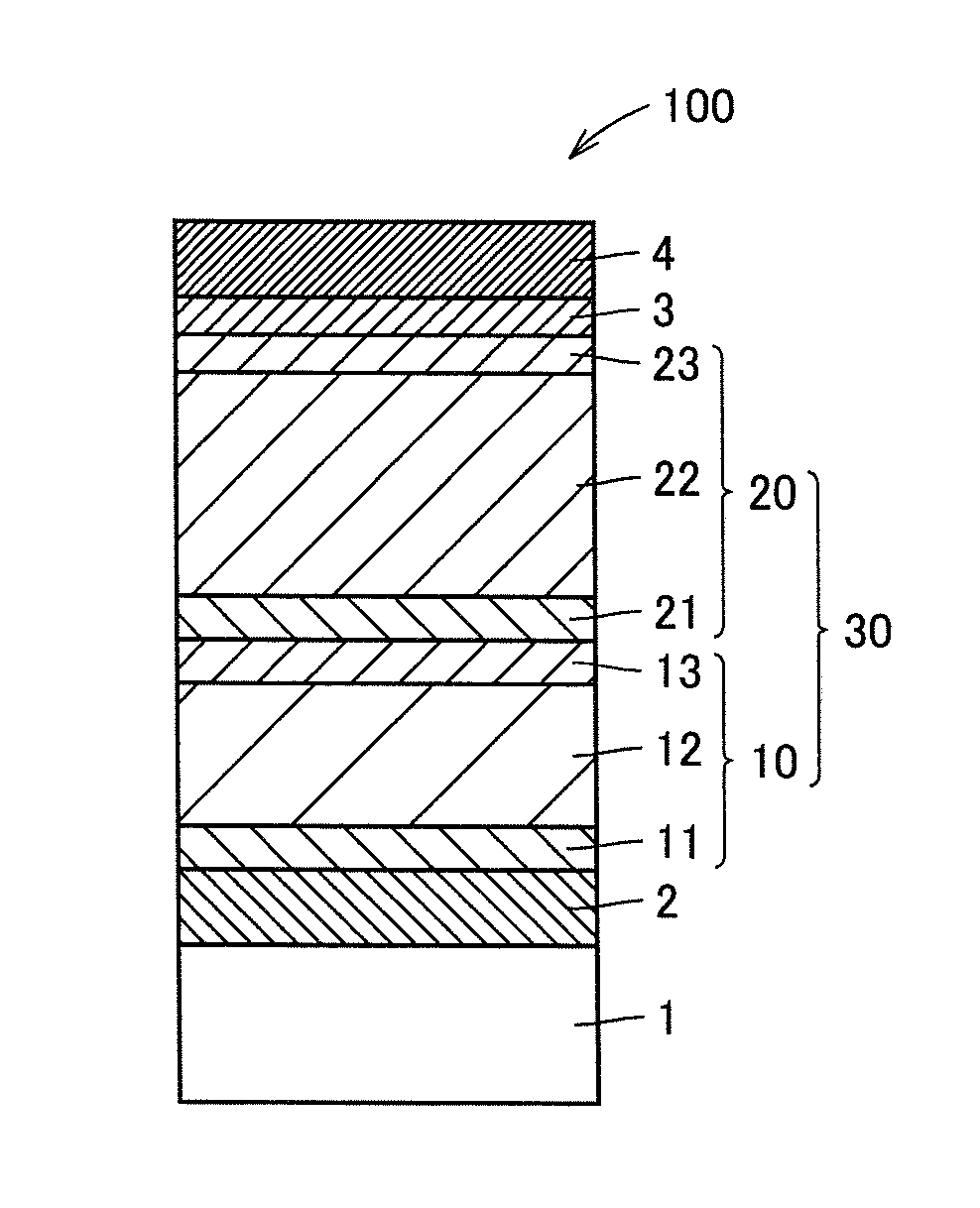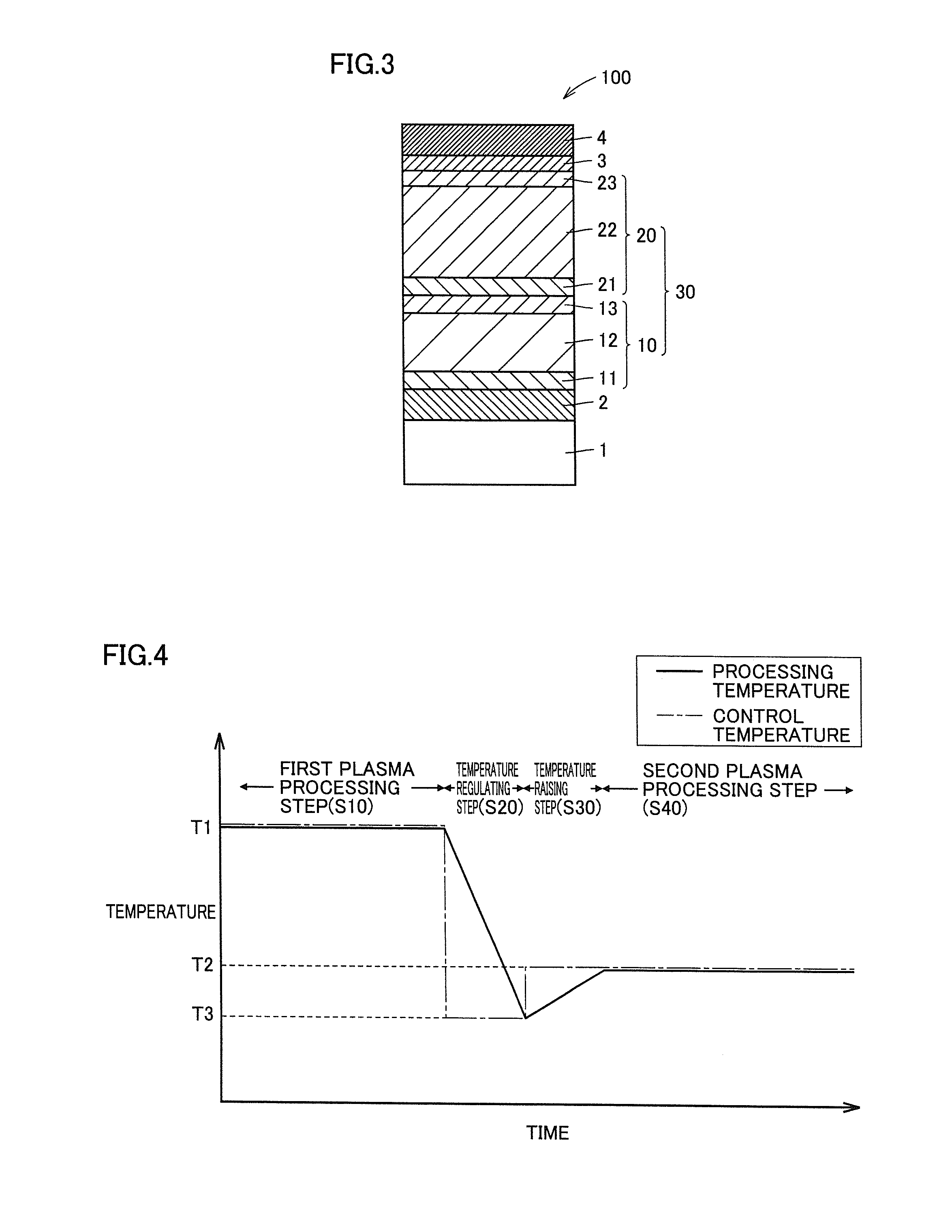Method of manufacturing photoelectric conversion device
a technology of photoelectric conversion and manufacturing method, which is applied in the manufacture of final products, testing/measurement of semiconductor/solid-state devices, and basic electric elements. it can solve the problems of increasing the cost of manufacturing photoelectric conversion elements, affecting the efficiency of production lines, and affecting the production efficiency of the entire production line. achieve excellent photoelectric conversion characteristics, reduce production cost, and improve production efficiency
- Summary
- Abstract
- Description
- Claims
- Application Information
AI Technical Summary
Benefits of technology
Problems solved by technology
Method used
Image
Examples
first embodiment
Photoelectric Conversion Device
[0044]FIG. 3 is a cross-sectional view schematically showing the configuration of a photoelectric conversion device manufactured by the manufacturing method according to the present embodiment. A photoelectric conversion device 100 shown in FIG. 3 includes a first photoelectric conversion body 10, a second photoelectric conversion body 20, a conductive film 3, and a metal electrode 4 on a transparent conductive film 2 formed on a substrate 1. First photoelectric conversion body 10 is an amorphous pin structure stacked body formed by stacking a first p-type semiconductor layer 11, an i-type amorphous silicon-based photoelectric conversion layer 12 and a first n-type semiconductor layer 13 in this order. Second photoelectric conversion body 20 is a microcrystalline pin structure stacked body formed by stacking a second p-type semiconductor layer 21, an i-type microcrystalline silicon-based photoelectric conversion layer 22 and a second n-type semiconduct...
example 1a
[0058]According to the manufacturing method of the present embodiment, a photoelectric conversion device was produced on the conditions that the power density per electrode unit in the first plasma processing step (S10) was set at 0.068 W / cm2 and the power density per electrode unit in the second plasma processing step (S40) was set at 0.225 W / cm2.
[0059]FIG. 4 is a graph showing changes in the control temperature and the actual processing temperature from the first plasma processing step (S10) to the second plasma processing step (S40) in the present example. In FIG. 4, the horizontal axis shows time while the vertical axis shows a temperature. In FIG. 4, the alternate long and short dashed line shows a control temperature while the solid line shows an actual processing temperature. The processing temperature, that is, the temperature of an anode, was measured by a thermocouple.
[0060]As shown in FIG. 4, the control temperature was set at T1 in the first plasma processing step (S10)....
example 1b
[0062]According to the manufacturing method of the present embodiment, a photoelectric conversion device was produced on the conditions that the power density per electrode unit in the first plasma processing step (S10) was set at 0.068 W / cm2 and the power density per electrode unit in the second plasma processing step (S40) was set at 0.300 W / cm2.
[0063]FIG. 5 is a graph showing changes in the control temperature and the processing temperature from the first plasma processing step (S10) to the second plasma processing step (S40) in the present example. In FIG. 5, the alternate long and short dashed line shows a control temperature while the solid line shows an actual processing temperature. The processing temperature, that is, the temperature of an anode, was measured by a thermocouple.
[0064]As shown in FIG. 5, in the second plasma processing step (S40), since the power density was relatively high and the substrate was readily heated by radio-frequency discharge, the processing temp...
PUM
| Property | Measurement | Unit |
|---|---|---|
| pressure | aaaaa | aaaaa |
| pressure | aaaaa | aaaaa |
| pressure | aaaaa | aaaaa |
Abstract
Description
Claims
Application Information
 Login to View More
Login to View More - R&D
- Intellectual Property
- Life Sciences
- Materials
- Tech Scout
- Unparalleled Data Quality
- Higher Quality Content
- 60% Fewer Hallucinations
Browse by: Latest US Patents, China's latest patents, Technical Efficacy Thesaurus, Application Domain, Technology Topic, Popular Technical Reports.
© 2025 PatSnap. All rights reserved.Legal|Privacy policy|Modern Slavery Act Transparency Statement|Sitemap|About US| Contact US: help@patsnap.com



